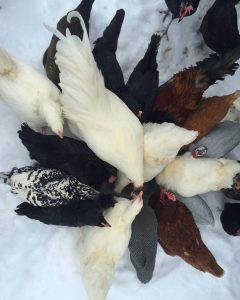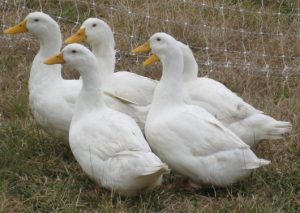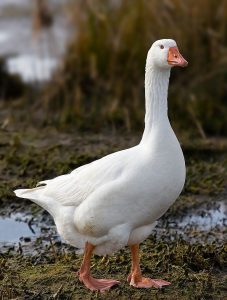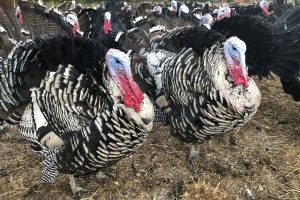Poultry Copy
Poultry is a class of domestic birds such as chickens, turkeys, ducks and geese. They are usually raised commercially or domestically for meat, eggs and feathers. The domestication of poultry took place around 5,400 years ago in Southeast Asia. This may have originally been as a result of people hatching and rearing young birds from eggs collected from the wild, but later involved keeping the birds permanently in captivity. Selective breeding for fast growth, egg-laying ability, conformation, plumage and docility took place over the centuries, and modern breeds often look very different from their wild ancestors. Although some birds are still kept in small flocks in extensive systems, most birds available in the market today are reared in intensive commercial enterprises.
Chickens

Chickens are medium-sized, chunky birds with an upright stance and characterized by fleshy red combs and wattles on their heads. Males, known as cocks, are usually larger, more boldly coloured, and have more exaggerated plumage than females (hens). Chickens are gregarious, omnivorous, ground-dwelling birds that in their natural surroundings search among the leaf litter for seeds, invertebrates, and other small animals. They seldom fly except as a result of perceived danger, preferring to run into the undergrowth if approached.
Ducks

Ducks are medium-sized aquatic birds with broad bills, eyes on the side of the head, fairly long necks, short legs set far back on the body, and webbed feet. Males, known as drakes, are often larger than females (known as hens) and are differently coloured in some breeds. Domestic ducks are omnivores, eating a variety of animal and plant materials such as aquatic insects, worms, small amphibians, waterweeds, and grasses. They feed in shallow water by dabbling, with their heads underwater and their tails upended. Most domestic ducks are too heavy to fly, and they are social birds, preferring to live and move around together in groups. They keep their plumage waterproof by preening, a process that spreads the secretions of the preen gland over their feathers.
Geese

Geese were domesticated in Siberia. Despite their early domestication, geese have never gained the commercial importance of chickens and ducks. Domestic geese are much larger than their wild counterparts and tend to have thick necks, an upright posture, and large bodies with broad rear ends. Some birds are large and fleshy and used for meat, while the Chinese geese have smaller frames and are mainly used for egg production. The fine down of both is valued for use in pillows and padded garments.
Turkeys

Turkeys are large birds, their nearest relatives being the pheasant and the Guinea fowl. Males are larger than females and have spreading, fan-shaped tails and distinctive, fleshy wattles, called a snood, that hang from the top of the beak and are used in courtship display. Wild turkeys can fly, but seldom do so, preferring to run with a long, straddling gait. They roost in trees and forage on the ground, feeding on seeds, nuts, berries, grass, foliage, invertebrates, lizards, and small snakes.
